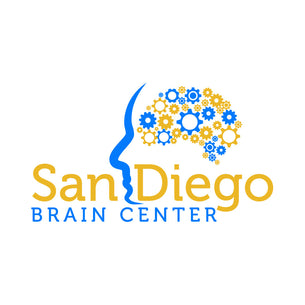When you go for your first functional neurology exam, you’ll likely encounter exam procedures and tools not found a conventional doctor’s visit. Although high-tech equipment isn’t necessary for a functional neurology exam, it can help the practitioner perform a more thorough evaluation.
For the patient, the functional neurology exam may include wearing strange goggles, being spun in a chair, following dots of light on the wall, and standing on a platform that records your micro-movements.
Whether you’ve had a brain injury, or are struggling with poor brain function or other brain-based disorders, all of these tests can help identify problem areas and direct customized rehabilitation.
Videonystagmography (VNG)
Videonystagmography (VNG) is an exam procedure that involves wearing infrared goggles to video record the movement of the eyes in response to various movements and tasks (such as being slowly spun in a chair, head position changes, following a visual target). This test detects abnormalities in the vestibular system.
The vestibular system, which involves the inner ear, eyes, and brain, tells you where you are in space. It plays an important role in keeping you stable and aware of where you are in relation to the environment. Poor vestibular function also plays a role in anxiety, irritability, and mood instability.
The vestibular system is fragile and easily damaged from head injury, falls, whiplash, or blows to the body. Common symptoms of vestibular problems include poor balance, dizziness, motion sickness, and anxiety.
By examining the movement of the eyes in both darkness and light and in response to various movements and stimuli, VNG testing can determine whether symptoms are coming from the brain, the vestibular system, or both. Knowing this helps the functional neurologist create customized rehabilitation techniques that target specific areas of dysfunction.
Computerized Dynamic Posturography (CDP)
Computerized dynamic posturography(CDP) involves standing on different types of surfaces and following simple instructions (such as look left, look right, look up, close your eyes). This testing measures how you respond to different balance challenges, which identifies areas of the brain not functioning properly.
Gait Analysis
Gait analysis simply involves having the practitioner observe your gait when you walk. You may be asked to challenge your brain while walking by counting backwards by sevens or reciting every other letter of the alphabet. You also may be asked to walk by placing one foot directly in front of the other, touching heel to toe, to make balance harder. Your walking stance, arm swing, posture, and balance all give clues to areas of brain dysfunction.
Metabolic Assessment
Your brain can only be as healthy as its internal environment. Your diet, lifestyle, stress levels, hormone balancing, gut health, blood sugar, and more all play a significant role in your brain health and function.
We also use your symptoms to assess the activity of the neurotransmitters, brain chemicals that relay communication between neurons. For instance, low serotonin is involved in depression and low dopamine in lack of motivation. This is also called functional neurochemistry. Functional neurology is a multi-faceted discipline that includes brain assessment and rehabilitation in total health care. Ask my office for more information.
